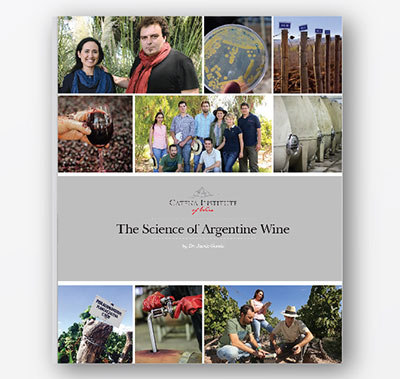
The vision of the Catena Institute of Wine is to continue elevating our historic variety Malbec and our Argentine winemaking regions for another 100 years. Nicolás Catena Zapata's high altitude wine revolution led to the discovery of a new terroir for wine, the Adrianna Vineyard at almost 5,000 feet elevation. Today, the team of the Catena Institute of Wine is dedicated to studying every meter, every rock, every insect and microorganism in the Adrianna Vineyard, making it perhaps the most studied vineyard in the world.
Fernando Buscema
Executive Director Catena Institute of Wine
Address: J. Cobos s/n, Agrelo, Luján de Cuyo, MENDOZA, ARGENTINA
Phone/Fax: (54) (261) 413 1100
Belén Ureta
Project and Resource Management Specialist
Address: J. Cobos s/n, Agrelo, Luján de Cuyo, MENDOZA, ARGENTINA
Phone/Fax: (54) (261) 413 1100
1852
Original French Malbec vines planted in Argentina.
1902
Italian Nicola Catena plants his first Malbec vineyard in Mendoza - Bodega Catena Zapata is born.
1945
The Second Generation - Domingo Vicente Catena, master blender, discovers the Uco Valley as his best source of Malbec.
1960's
Under the Saint Felicien label, Nicolás Catena Zapata's and his father Domingo's Cabernet Sauvignon is prized as Argentina's most age-worthy red.
1984
The First Catena Revolution: Nicolás Catena challenges himself to make Mendoza wines that can stand with the best of the world.
1992
The Second Catena revolution: Looking for cooler climate, Nicolás Catena Zapata dares to plant in Gualtallary, at 5,000 feet elevation, where vines had never been planted before.
1995
Under Dr. Laura Catena's leadership, a 135 plant Malbec selection from the Angelica Vineyard - the Catena Cuttings - becomes the founding project of the Catena Institute of Wine.
1995 to present
Weather stations are placed in all the Catena vineyards at different altitudes to understand high altitude climate variations.
2002
Winemaker Alejandro Vigil begins parcel selection work in the Catena Institute.
2004
High altitude research with Agronomy School of Mendoza. Sunlight Intensity Study is published in Journal of Agricultural and Food Chemistry.
2005 an onwards
The Catena family begins to explore and plant vineyards in regions outside Mendoza - Salta, La Rioja Argentina and Patagonia Argentina.
2007
Fernando Buscema, as head of the Catena Institute, begins collaboration with local Institutions and the Universidad de Cuyo to focus on Malbec and sustainability.
2008
The Third Catena Revolution: An in-depth study of all the parcels within the Adrianna Vineyard begins. Adrianna White Bones and White Stones Chardonnay first vintage.
2013
Sustainability Protocol is developed by the Catena Institute of Wine in conjunction with Bodegas de Argentina and becomes the first vineyard sustainability protocol in Argentina.
2013 to present
Ongoing studies on soil microbiome, in-depth soil parcel composition as it relates to flavor and aroma, ageability, alternative varieties, phylloxera in Argentina, Bonarda plant selection.
2014
The most extensive Malbec study that has been carried out to date is published in “Food Chemistry” and “The American Journal of Enology and Viticulture”, as a result of a joint study between the CIW and UC Davis (Buscema, Boulton).

A high altitude vineyard has environmental conditions (temperature and sunlight intensity mainly) that affect the oenological quality of berries in a significant way, thus affecting the final wine. The number of meters above sea level (asl) varies depending on latitude and proximity to the ocean. In Mendoza, vineyards located above 1000 m asl, such as the regions of Altamira, Eugenio Bustos, El Cepillo and Gualtallary, are considered high altitude vineyards.
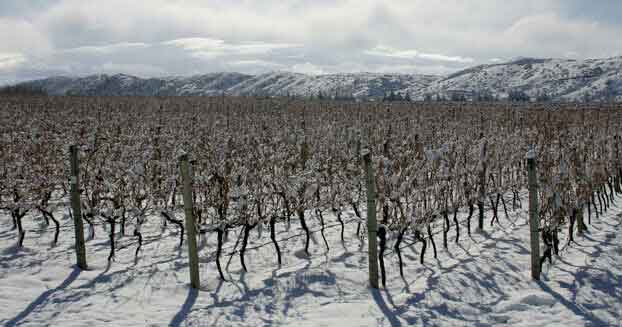
Cool nights and a wide thermal amplitude also characterize high altitude regions. In fact, temperature decreases approximately 1°C for every 100m increase in height. Plant respiration at night is a key physiological process that is highly influenced by temperature. Cool temperatures in high altitude regions allow for lower respiration rates, which enhances the concentration of malic acid in the berries. Therefore, wines sourced from high altitude regions offer higher acid levels. Wines with higher acidity can be aged longer since acidity helps to reduce the effects of oxidation. Cooler temperatures also allow berries to maintain other quality such as anthocyanins and aromatics compounds typical of each variety.

As altitude increases, the atmosphere becomes thinner. This means there is a thinner barrier between the sun and the earth’s surface in which causes an increase in sunlight intensity. At high altitude, ultraviolet-B light (UV-B, the most energetic fraction from sunlight) also increases. Since UV-B light is very strong at high altitude, it can damage living tissue. The plant defends itself against UV-B by producing certain components that are actually beneficial for grape quality. In fact, Mendoza’s wine growing regions planted above 1000 m asl tend to develop higher quality berries due to the increased levels of UV-B. The UV-B results in a greater accumulation of polyphenols and aromatic compounds in the berry, caused by the plant’s defense mechanism against sunlight to protect its seeds. A higher content of polyphenols and aromatics translates into a wine with a darker color, more complex flavors and longer aging potential.

"Malbec is an immigrant grape that has been lost in the old world despite being the grape of highest renown in Medieval Europe. If you think of the world's other main grapes such as Cabernet Sauvignon, Chardonnay and Syrah, they are still very important in the old world. Malbec was practically abandoned. It is a great story from a historical standpoint. Given that it is the main variety of our country we need to do everything we can to elevate it, to have people understand that it does have sophistication in terms of having different flavors in different climates, soils and regions."
Dr. Laura Catena

The history of Argentine Malbec involves a nineteenth-century man named Domingo Faustino Sarmiento, the soon to be president of Argentina, the man who would become known as the father of Argentine education. In his effort to acquire the refined ways of France in the mid-1800s, Sarmiento hired a Frenchman, Michel Aimé Pouget, to establish a vine nursery in Mendoza. The Quinta Nacional, as the nursery was known, was founded in 1853. In the 80's, the Malbec was a variety used to give color and body to the millions of liters that were produced for domestic consumption. Now in Argentina, Malbec can be glorious both as a single varietal and in a blend; it combines the dark, ripe, concentrated flavors and aromas of its famous French siblings Cabernet Sauvignon and Cabernet Franc, with a richness and smoothness on the palate that has turned it into the fastest-growing wine import in the world.

The Catena Malbec Selection program started in 1995 when Dr. Laura Catena planted 135 selections of Malbec in Catena’s La Pirámide vineyard. Plants were selected from the historic rows in Lot 18 of the Angelica Vineyard, planted circa 1930 on the shores of the Mendoza River.
After a few years, our team was able to harvest and vinify the grapes from the best performing plants, those with the smallest bunches and berries, lower yields and ideal balance between tannins, texture, aromatics and natural acidity. Nicolás and Dr. Laura Catena then planted only the best selections throughout the family's high altitude vineyards in Mendoza. There is also a complete replicate of the original selection at the Adrianna vineyard.

In 1995, we planted a French Malbec clone (Cot) in La Pirámide Vineyard, next to our proprietary Malbec selections, the Catena Plant Selection. In 2003, we were able to confirm that the characteristics of the French clone differed greatly from the characteristics of our own Malbec selections, originally sourced from Catena’s mother vineyard, Angélica. As a result, we asked ourselves if the vegetative material, in addition to soil and climate, was also an influence on the plant, which would explain why Argentine Malbec differed from Malbec planted elsewhere. To test this theory, in 2007, we sent five Argentine clones from our collection to be planted in the UC Davis nursery next to other Malbec selections from France. In 2011 we observed significant differences between the yields and phenolic compounds of the French and Argentine clones. This initial study suggested that the Malbec selections brought from France to Argentina in 1853 were very different from other Malbec selections planted anywhere else in the world.
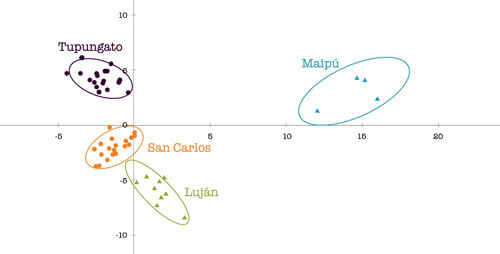
In partnership with researchers from UC Davis, the Catena Institute carried out the largest study on Malbec Terroirs to date. We compared 42 vineyard sites from Mendoza and California, vinifying them in a standardized way, to allow the site differences to emerge. Then we analyzed the phenolic and aromatic compounds and conducted comparative tastings. Applying advanced statistical techniques (chemometrics), we found out that Malbec takes on a number of different flavor profiles depending on its origin. In general, the Mendocinian wines offered more complexity and ripe red fruit flavors compared to the Californian samples. In addition, certain vineyard lots produced wines with a very distinctive flavor profile, like lot 6 from Adrianna Vineyard. This study suggested that Mendoza has a wide variety of terroirs and can therefore produce “small lot” Malbec wines that are truly expressive of each vineyard site. Currently, we are working on a more in-depth study on this subject that we anticipate will lead to a more profound understanding of the uniqueness of Malbec from Mendoza.
The Adrianna Vineyard is located in the Tupungato department of the Uco Valley, in the soon-to-be-appellation of Gualtallary. The remarkable thing about this vineyard is its high altitude, at 4,757 feet elevation. Nicolás Catena decided to plant here to obtain wines from a cooler climate, like the most prestigious wines of Burgundy or Bordeaux. The combination of singular climatic conditions, carefully sought after plants, and great diversity of soils makes this vineyard unique, and it is our wish is that it becomes recognized as the most studied vineyard in the world.

The Adrianna vineyard, planted in 1992, was initially Chardonnay, Pinot Noir and Merlot. Later on, after years of research to better understand the climatic conditions of the region, Sauvignon Blanc, Viognier, Cabernet Sauvignon, Cabernet Franc and Malbec were planted; today the vineyard is 120 hectares. There is a wide selection of plants for each grape variety, trained to a vertical shoot positioning trellis system and planted at different densities. Recently, a new Malbec lot was planted using the Goblet vine training system. The Malbec grown in the Adrianna Vineyard comes from selected plants in lot 18 of Catena’s Angélica Vineyard, the Mother vineyard to Catena’s Malbec clonal selection project. Other Malbec clones grown in Adrianna come from La Pirámide Vineyard; for instance, Catena Malbec clone 10 and clone 120. In order to study the behavior of Malbec in different “terroirs,” we planted 125 Malbec selections in the Adrianna vineyard that were originally sourced from our La Pirámide vineyard in Agrelo.

Adrianna’s climate is influenced by high altitude. The altitude causes cooler temperatures and higher sunlight intensity compared to wine growing regions in lower altitudes. The average annual temperature is around 13º C, and during the ripening months (February, March and April), the average monthly temperature is 20.2 ºC, 16.5 ºC and 13.2 ºC respectively. Additionally, maximum temperatures during these months rarely exceed 30 ºC. Low temperatures at Adrianna enable early ripening grapes such as Chardonnay to reach low alcohol levels and higher acidity. High sunlight intensity, UV-B in particular, received by the berries (the levels of UV-B is approximately 38% higher than in regions located at 500 m a.s.l.) increases phenolic and anthocyanin contents, translating into wines with a darker color, richer mouthfeel and longer aging potential. High sunlight intensity also allows for late ripening grape varieties like Cabernet Sauvignon to achieve optimal ripeness despite the cold temperatures.

The soils of the Adrianna vineyard are particularly heterogeneous due to their alluvial origin, born of the flow of water from ancient rivers and glaciers combined with the Andes volcanic act ivity. Adrianna soils are so heterogeneous that you will find a difference in topsoil depths from 30 to 200 cm within 10 meters distance in the same lot in the vineyard. This means there is less water retention in parts of the vineyard, which results in differences in vigor and berry characteristics. The extensive work of identifying the more than 200 parcels was started by Dr. Laura Catena and was later continued by Alejandro Vigil and the Catena Institute of Wine team. The research has taken place over the last two decades and continues today.
People always told us that due to the characteristics of Mendoza, our soils were just sterile matter. However, we have discovered that our soils are alive. Plant Growth Promoting Rhizobacteria (bacterias that live naturally in our soils) help plants to resist frost, diseases and grow properly in our extreme climate conditions.

We have not only applied our knowledge and experience to understand the Adrianna Vineyard, but also to study other wine growing regions and grape varieties. We continue to explore our country in our quest to produce high quality Argentine wines. We also aim to be a strong partner to other entities working to elevate our wine region. We continue to share our findings with the Argentine wine community so our region will continue to make strides in sustainability and other innovations that will lead us into the future.

The Catena Institute of Wine pioneered and developed the first Sustainability Certification for Argentine Wineries and Vineyards and was the first Argentine winery to be certified in June of 2015. In 2010 our viticulture team formed a partnership with the Bodegas de Argentina Technical Committee to create a sustainability code that would be available to the entire country. This code is adaptable to fit the needs and challenges of each specific Argentine wine region. We are happy to report that today several other Argentine wineries are using the Bodegas de Argentina sustainability code that we helped pioneer.
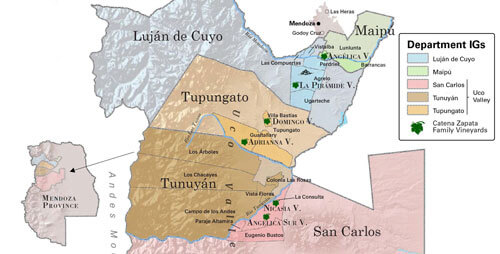
The Appellation of Origin law, passed in 1999, set the framework for the creation of Argentinian Indications of Origin (IG), the quality distinction system for Argentina. The Catena Zapata family believes that the IGs are a key tool in helping wine consumers understand the unique characteristics of each of our regions. The Catena Institute of Wine, Catena viticultural team and INV Technical Committee team have worked to create the Paraje Altamira IG. We are currently working on delimiting the boundaries of the Gualtallary IG.
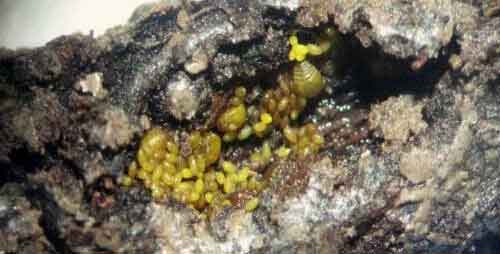
Phylloxera is a grape vine pest caused by an aphid that feeds on roots. In Argentina it is present since 1878. Why this pest that destroyed many vineyards in Europe has not caused damage to our vineyards? In collaboration with UC Davis (EEUU) and IBAM (Argentina), we performed a genetic characterization of phylloxera present in all wine regions of Argentina. We found strains that were related to Californian biotypes, but not with European biotypes. We are currently assessing the aggressiveness of the strains in the most used rootstocks.
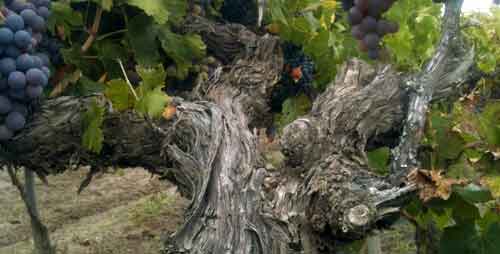
Each region of Argentina has its own viticulture history which includes grape varieties that were grown in our country decades or even centuries ago but have not found a place in the market in Argentina today. The CIW is working to resurrect grape varieties that were traditionally grown in Mendoza’s Eastern Region – where the Catena family first settled – such as Bonarda and Criolla. The CIW has also expanded its study to other varieties that Mendoza is not traditionally known for, including Cabernet Franc, Grenache, Caladoc, Nebbiolo and Petit Verdot. The results do not cease to surprise us and we hope that soon will surprise you too.

Following our vision over the last decade to advance our wine regions to the First World of Wine, the Catena Zapata family has expanded beyond Mendoza and has planted vineyards in Salta, La Rioja, San Juan, and Patagonia, Argentina. The diversity of Argentina’s landscape, viticulture, history and culture is illustrated by the difference of each of these regions. Malbec takes on different flavors and textures in each province, but there are also other varieties that particularly flourish within these regions, such as Torrontés, Bonarda, Syrah, Cabernet Sauvignon and Pinot Noir. The Catena Institute of Wine is applying its knowledge of the unique terroirs within these regions to produce wines that showcase the best quality of our regions, thereby elevating the entire country in the First World of Wine.
The Catena Institute of Wine partners with many prestigious research institutions in Argentina and the U.S. who share a mutual interest in our vision. Together, we have published the largest, most prolific, Malbec study in the world carried out to date.
The CIW has developed a strong partnership with the Department of Viticulture & Enology of the University of California, Davis, focused on studying Malbec terroir. Through collaborative efforts, we have studied the characterization of Malbec Terroirs from Mendoza and California, phylloxera, and a comparison of Malbec clones from Argentina and France. To further this partnership, the CIW offers a scholarship to UC Davis post graduate students to conduct part of their research work in Argentina.
The National University of Cuyo is one of Argentina’s most respected universities. Its School of Agronomy has trained the best viticulturists in the region. Currently, we are working with its top graduate students in an effort to characterize Mendoza’s Viticultural terroirs. As a result, we have discovered that the soils of Adrianna Vineyard are alive, and that in fact, the rhizobacteria present in this soil contributes largely to grape quality and to a better adaptation of the plants to their environment.
(The National Council of Scientific and Technical Research) is Argentina’s main research institution. Catena and CONICET co-financed several Ph D studies on the effect of sunlight intensity on wine quality and its effect on Malbec vines grown at the Adrianna Vineyard. The results were published in several prestigious scientific journals.
This institute, founded in 2009, worked with the Catena Institute since the very beginning, in two joint studies: the characterization of Catena Malbec selections and the effect of sunlight at the Adrianna Vineyard. Additionally, we published a joint study on the nutraceutical values of fermentation residues.
Microwine is an international project that involves 15 PhDs from all over the world. The aim: to understand wine’s terroir from the whole picture: soil, plant, climate and microbiome effect, through projects that take place in different countries by training people using the highest technology available. We are now part of this network and thanks to La Plata University in Argentina we will be going deeper into the study of Adrianna’s vineyard microbiome.
Septentrion is an international project developed in partnership with the University of Burgundy. Its goal is to understand how Pinot Noir and Chardonnay vines perform in different regions with different climates: Burgundy, Oregon, California, Argentina, and Germany. It includes agronomical and oenological measurements from several vintages, which will be analyzed using metabolomics. Thanks to this database, we will not only have information on the behavior of grape varieties in a global scenario, but also we will be able to contextualize it taking into account climate change perspectives.
IVES was founded in 2017 by a group of leading universities and research institutes, it aims to make the results of scientific research in this field freely available for researchers and professionals. IVES is a non-profit association managed by its members. IVES is also supported by major actors from many important wine-producing countries and institutional partners.
"This book tells the story of the Catena Institute and some of the research that it has sponsored in collaboration with academic partner organizations. It also tells the story of Malbec, and how Catena rediscovered and made famous this almost-abandoned variety that had fallen out of favour in its homeland of France. While Catena has conducted studies across several sites in Mendoza, much of the research discussed here has been focused on a single vineyard: Adrianna. There’s a strong case for arguing that this is now one of the world’s best studied vineyards, and it represents a model system for how other vineyards might be understood on a scientific level."
Dr. Jamie Goode
